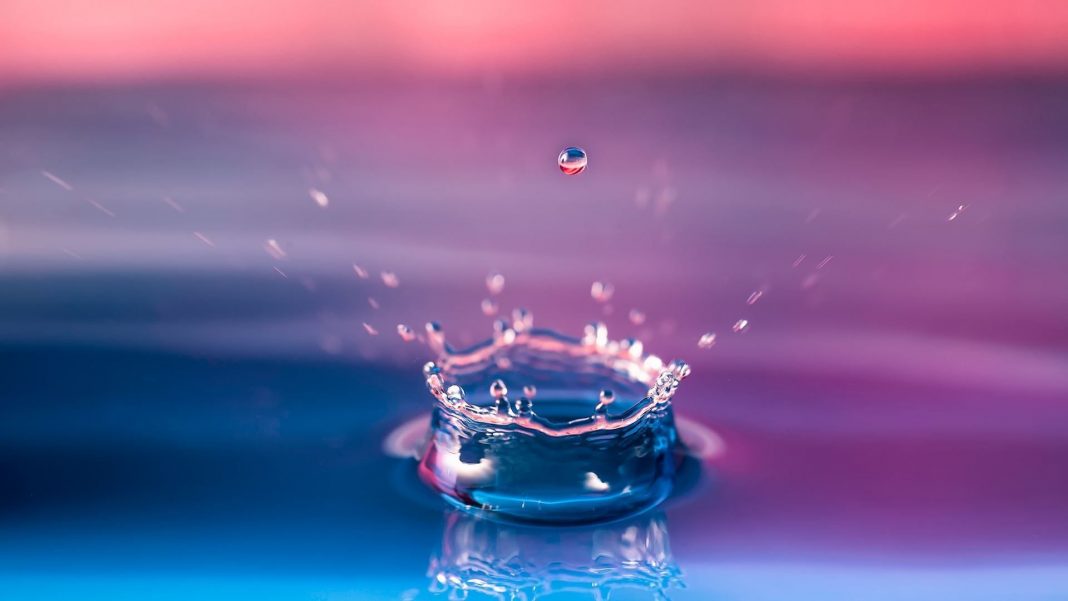One of the most abundant and significant molecules on the planet, water is barely understood by scientist because of its consistently bizarre traits and dozens of unique behaviors. Recently, physicists have learned that water exists in two different types of liquid states, with dramatic contrasts in density and structure between the two.
Studying H20 using X-rays, physicists at Stockholm University have found signs that the most familiar form of water, in its liquid state, is actually a fluctuating between two forms, a high density, and low-density variety.
“The new results give very strong support to a picture where water at room temperature can’t decide on which of the two forms it should be, high or low density, which results in local fluctuations between the two,” said Lars G. M. Pettersson, one of the researchers.
“In a nutshell: Water is not a complicated liquid, but two simple liquids with a complicated relationship.” We learn in grade school that water has three phases: liquid (water), solid (ice), and gaseous (water vapor). However, water isn’t so simple. Not only is there a fourth plasma-like state that behaves strangely, but water in the three standard states also behaves rather oddly too.
Outside of Mercury, liquid water has a higher surface tension than any other known liquid. Plus, as it freezes, water expands rather than contracts the way all other known substances do. At the same time, the boiling point for water is uncharacteristically high for its small molecular weight, unlike other hydrides whose boiling point lowers as the molecule size reduces.
Surprisingly, researchers have characterized 70 distinct properties of liquid water that are at odds with all other types of liquid substances and are unique alone to water. One of the longest running mysteries about water is whether there is more than a single phase of its liquid state. The question stems from previous findings that ice can exist in both high and low-density configurations. Of course, this isn’t the typical ice you find in your happy hour cocktail glass, that’s a crystalline ice that’s got all its molecules neatly organized and all lined up in repeating rows.
Instead, there’s another type of ice, the type found predominantly in the rest of the universe, known as amorphous ice. In this type of ice, the molecules are disordered and switch between high and low-density formats. As this is the most common form of solid water found outside of Earth, a scientist has long suspected that liquid water must make the same density fluctuations. But it’s only been recent, that research tools have been powerful enough to make the detailed study of these molecular shifts in order to investigate fully.
This latest study utilized two kinds of X-ray imaging to monitor the movements of and distances between water molecules as it changed from an amorphous ice to a viscous liquid and then to another liquid, more viscous than before and lower in density.
With this, they found two well-defined phases of liquid.
“The new remarkable property is that we find that water can exist as two different liquids at low temperatures where ice crystallization is slow,” said Anders Nilsson, another of the researchers. Because this is the result of a single study, other research still needs to be completed to verify the findings, at least before they can update the textbooks.
Other unusual liquid states have been found in water previously.
Just last year, an Oxford University research team discovered that between the degrees 104 and 140 Fahrenheit (40 and 60 Celsius) liquid water has the ability to change states and take on an entirely different set of properties depending on the state to which it changes. Both findings add more pieces to the puzzle that is H2O, the funny little molecule we’re surrounded by that scientist are still working to understand.
“No one really understands water,” Philip Ball explained in Nature last year.
“It’s embarrassing to admit it, but the stuff that covers two-thirds of our planet is still a mystery. Worse, the more we look, the more the problems accumulate: new techniques probing deeper into the molecular architecture of liquid water are throwing up more puzzles.”
More News to Read
- What Does it Take to Build the Super Collider?
- According to a New Study, Early Life Stress Can Change Genes in Brain
- Stunning View of Aurora Borealis from ISS in new NASA video
- Imagine Being Able to Explore the Brain Like a Website
- Quantum Computers Made Even More Powerful with New microchip generating ‘Qudits.’











